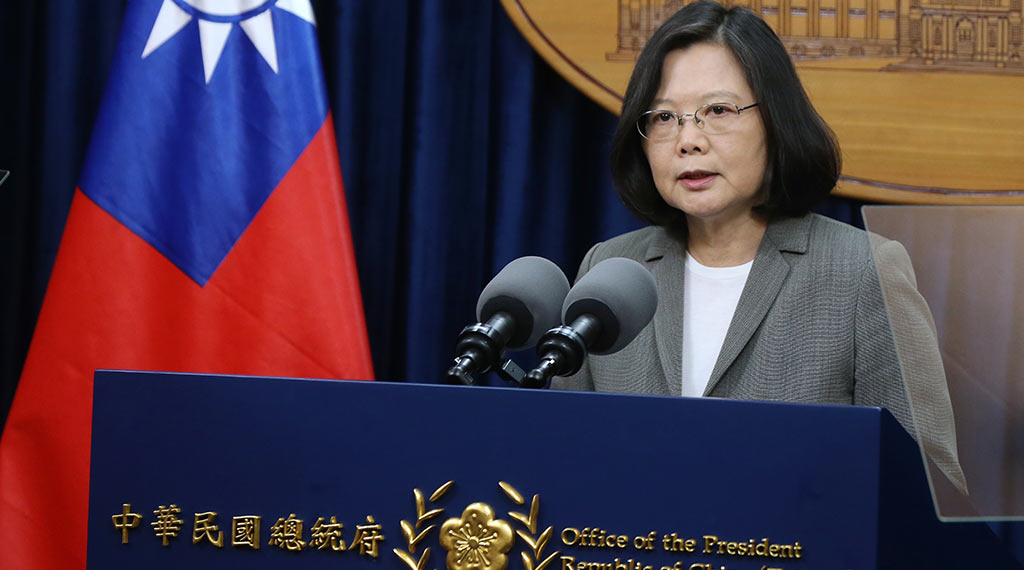
The Wall Street Journal recently broke the news that U.S. Special Forces and U.S. Marines have been secretly deployed to Taiwan for the last year to train Taiwan’s military. This apparent step-up in U.S. support for Taiwan got hopes up in some quarters and set off alarm bells in others.
The report was “kind of true” and “kind of not true.” The Marines and Special Forces appear to be the small training and observation teams that have been flowing in and out of Taiwan for many years. One suspects unnamed Biden administration officials blabbed to a reporter in hopes of showing that Team Biden is really backing Taiwan and standing up to China—after a week of large numbers of Chinese aircraft flooding Taiwan’s Air Defense Identification Zone.
Regardless, the report inadvertently highlighted the desperate need for U.S. forces and Taiwan forces to train together in a meaningful way.
Taiwan’s armed forces have experienced 40 years of near-isolation since Washington shifted diplomatic recognition from Taipei to Beijing in 1979. The defense relationship has suffered also from strict American-imposed limits on military-to-military interaction—in large part for fear of “provoking” the People’s Republic of China (PRC).
Taiwan military personnel do attend U.S. service schools. The militaries frequently consult and discuss. American trainers visit Taiwan. Exercise observation teams travel in both directions. And the Taiwan Air Force F16 pilot training scheme in the United States was renewed a few years ago.
But the Americans won’t actually do joint exercises or operations with Taiwan’s military. And that’s the only way Taiwan’s armed forces will improve. One wonders how U.S. and Taiwanese forces can defend Taiwan if they never actually practice together.
Against the odds, and despite the “Galapagos effect” of long ago frozen evolutionary changes, Taiwan’s armed forces are still highly professional—even if underfunded and underappreciated. But they need to be much better.
The fact is, being ostracized is demoralizing—and contributes to flagging public confidence in the military. It’s not surprising that many people in Taiwan, including some in the government, doubt U.S. reliability. That leads to an unhealthy level of fatalism among many Taiwanese.
An even more serious problem is the accompanying encouragement to the PRC to calculate that, if it ratchets up the pressure and strengthens its forces, the Americans—even if they are willing—will be unable to intervene when the time comes.
Beijing has effectively had a veto on U.S. behavior toward Taiwan and that has in fact been the case for decades, despite the U.S. Congress declaring since 2016 in successive National Defense Authorization Acts (NDAA) that Taiwan and U.S. forces conduct joint training.
Yet both the Pentagon and successive administrations appear to consider Congressional wishes on this subject to be irrelevant.
Moving Beyond the Pro-Forma
If the U.S.-Taiwan military relationship is to move beyond the pro-forma, the United States must go first and draw Taiwan’s military out of isolation—show that it’s backing up a smaller friend facing a powerful bully. Do this, and Taiwan just might believe the Americans are serious—and be more willing to listen to American advice. Too often U.S. officials (mostly former ones) and academics cycling through Taiwan come across as noisome scolds.
Do some of this joint training and Taiwan Armed Forces’ skills will rapidly improve—as will American and Taiwanese interoperability.
Where to train? Besides Taiwan, Guam is a perfect training location, and there are other places elsewhere in the South Pacific where Taiwan still has a few diplomatic allies.
A natural outcome of this effort will be Taiwanese and American military personal interspersed in each other’s units and headquarters, as well as ships and aircraft using their partners’ ports and airfields.
Expect political and psychological knock-on effects in Taiwan, Washington, Beijing, and regionally. People will see Americans are committed. And friends like Australia, Japan, France, and Britain might join in. And perhaps a few “undecided” nations will come down off the fence.
If any country has a reason to join in, it is Japan. The expression “Taiwan’s defense is Japan’s defense” is often heard in Japan’s Self Defense Force, and Japanese officials and politicians have recently started to say this publicly. This isn’t surprising. If the Chinese regime “takes” Taiwan, it will be astride the sea lanes through which most of Japan’s energy imports and much of its commercial trade flows.
A Proposed Joint Training/Exercise Scheme
With a little will and imagination, breaking Taiwan’s military out of isolation is easily accomplished.
There are a number of joint training and exercise options for Taiwan and U.S. forces. Two examples include a Taiwan Air Force F-16 squadron deploying to Andersen Air Force Base on Guam and training with U.S. Air Force counterparts, or U.S. and Taiwan Navy ships conducting maneuvers at sea followed by port calls in Guam or Hawaii—or even Kaohsiung.
Click HERE to read more.
06.13 總統針對巴拿馬共和國宣布與我國斷交發表談話,強調中華民國是主權國家,此時此刻「一致對外」是唯一的選擇,也是彰顯國家主權最有力的方式 by 總統府 is licensed under CC BY 2.0
- China, Look at the Numbers: Japan Threatens Nobody - December 8, 2025
- Newsham Breaks Down Latest China–Japan Standoff Near Senkakus Islands - December 4, 2025
- China’s Act of War Against PM Takaichi and Japan - November 24, 2025
